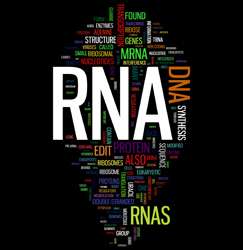Gene regulation through non-coding RNAs

A number non-coding RNAs are transcribed in humans but their role in the human body has not been elucidated. European scientists are deciphering the role of such RNAs in a newly discovered imprinted human genome domain.
The DLK1-GTL2 genome domain was recently discovered in human chromosome 14. It is an evolutionary conserved cluster of genes which are expressed in a parent-of-origin-specific manner. It consists of at least four protein-encoding genes paternally expressed and a series of small non-coding RNA (ncRNA) genes which are on the maternal allele.
These ncRNAs include well known ribosomal RNAs (rRNAs), transfer RNAs (tRNAs), small nuclear and nucleolar RNAs (snRNAs and snoRNAs, respectively), as well as microRNAs (miRNAs). The latter more often function as post-transcriptional regulators usually resulting in translational repression or target degradation and gene silencing. In addition, myriads of long, ncRNAs of essentially unknown function have recently been identified.
The EU project 'Biological role of microRNAs in the DLK1 GTL2 imprinted domain' (Callimir) focused on elucidation of the biological role of ncRNAs and miRNAs of DLK1-GTL2 domain in the mammalian genome.
Callimir researchers, employing state-of-the-art approaches, gained significant insights into the role of maternally expressed ncRNAs in the DLK1-GTL2 domain. In addition, they were able to confirm the transcription of these long ncRNAs and track their localisation in the interchromatin space.
Project scientists used muscular hypertrophy in sheep as a model system for the identification of an essential novel class of mutations that affect miRNAs interaction with their targets. Furthermore, bioinformatics analyses of human and mice single nucleotide polymorphisms (SNPs) databases showed a high abundance of putative mutations that positively or negatively affect miRNA-target interaction.
These findings explain the plethora of phenotypic variations which can be observed. This data is publicly available in the Patrocles database.
The achievements of the Callimir consortium provided new insights into the role of ncRNAs in human biology that might be useful for understanding and treating human genetic diseases.















